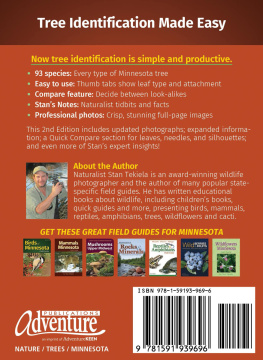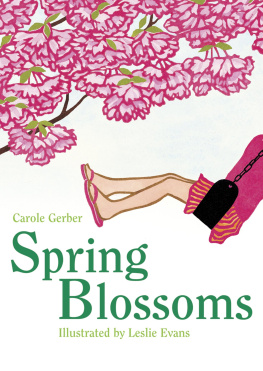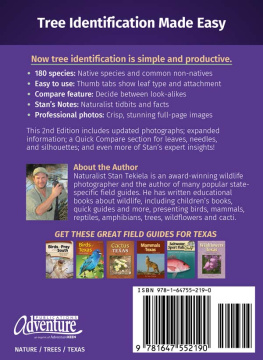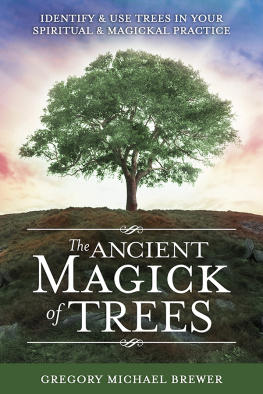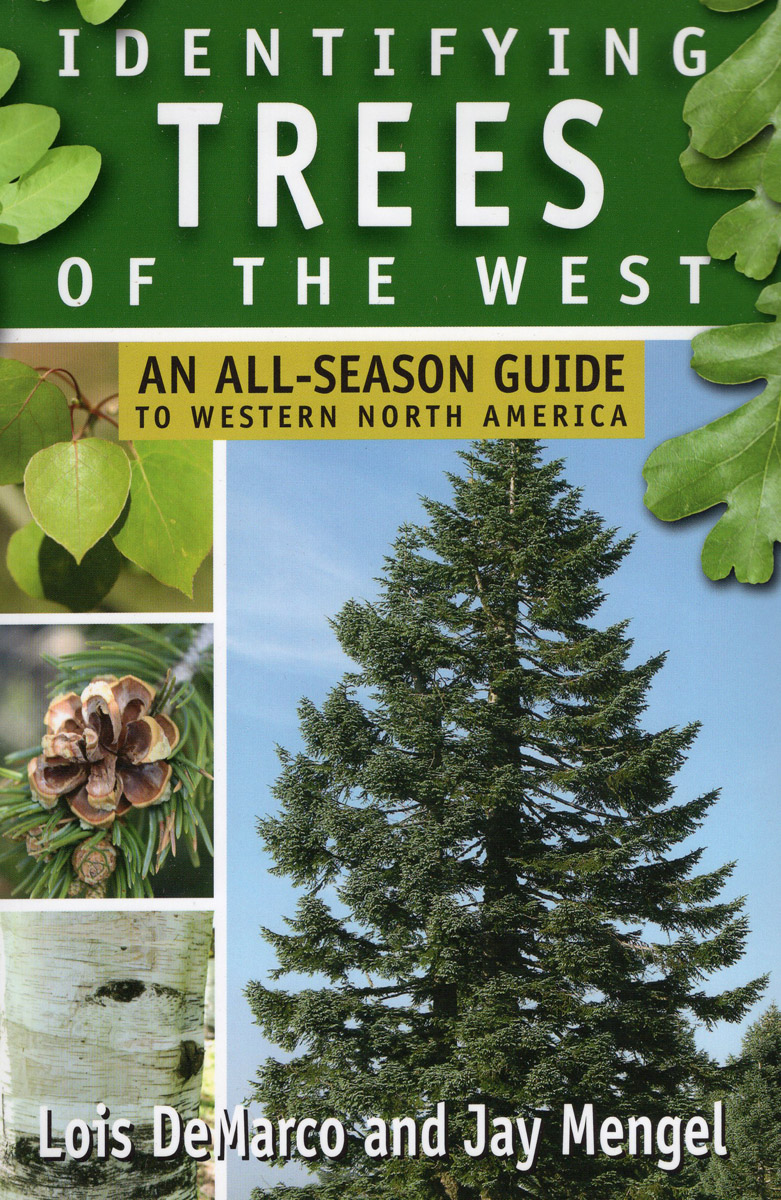References
Books
Cafferty, Steve. Trees: West. New York: HarperCollins, 2007.
Cope, Edward A. Muenschers Keys to Woody Plants. Ithaca, NY: Comstock Publishing, 2001.
Harlow, William M. Fruit Key and Twig Key to Trees and Shrubs. New York: Dover Publications, 1959.
Harlow, William M., Ellwood S. Harrar, James W. Hardin, and Fred M. White. Textbook of Dendrology. 5th ed. United States: McGraw Hill, 1969.
Harlow, William M., Ellwood S. Harrar, James W. Hardin, and Fred M. White, Textbook of Dendrology. 8th ed. United States: McGraw Hill, 1996.
Little, Elbert L. National Audubon Society Field Guide to Trees, Western Region. New York: Alfred A. Knopf, 2013.
National Audubon Society. Familiar Trees of North America: West. New York: Alfred A. Knopf, 2013.
Paruk, Jim. Sierra Nevada Tree Identifier. San Francisco: Yosemite Association, 1997.
Petrides, George A. A Field Guide to Western Trees. Peterson Field Guide Series. Boston: Houghton Mifflin, 1998.
Watts, Tom. Pacific Coast Tree Finder. 2nd ed. Rochester, NY: Nature Study Guild, 1973.
Williams, Michael D. Identifying Trees: An All-Season Guide to Eastern North America. Mechanicsburg, PA: Stackpole Books, 2007.
Websites
Key to the Flora of North America
www.efloras.org
Field Guide for the Identification and Use of Common Riparian Woody Plants of the Intermountain West and Pacific Northwest Regions. 2008.
http://www.nrcs.usda.gov/Internet/FSE_PLANTMATERIALS/publications/idpmcpu7428.pdf
Montana State University Extension svc tree identifier.
http://store.msuextension.org/publications/OutdoorsEnvironmentandWildlife/2B0323.pdf
Oregon Wood Innovation Center.
http://owic.oregonstate.edu/information-oregon-wood-species. OregonState University
Native American Uses of Utah Forest Trees.
http://extension.usu.edu/files/publications/publication/NR_FF_018pr.pdf/
CalPhotos.
http://calphotos.berkeley.edu/
Evergreen.edu Winter Twig Flash Cards.
http://blogs.evergreen.edu/naturalhistory/files/2012/10/Winter-Twig-Flashcards.pdf/
Center for Disease Control Poisonous Plants.
http://www.cdc.gov/niosh/topics/plants/
Native Plants PNW.
http://nativeplantspnw.com/author/habitatdana/
USDA Forest Service database.
http://www.fs.fed.us/database/feis/plants/tree
USDA database.
http://plants.usda.gov
California Plant Database.
http://www.calflora.org
The Gymnosperm Database.
www.conifers.org
University of Michigan Ethnobotany.
http://herb.umd.umich.edu/
The National Park Service Biodiversity Database. IRMA PORTAL version.
https://irma.nps.gov/npspecies/(access9/15/2014).NPSpecies
Forest types of North America, SAFopedia.
http://www.safnet.org
Virginia Tech Dendrology.
http://dendro.cnre.vt.edu/
Copyright 2015 by Stackpole Books
Published by
STACKPOLE BOOKS
5067 Ritter Road
Mechanicsburg, PA 17055
www.stackpolebooks.com
All rights reserved, including the right to reproduce this book or portions thereof in any form or by any means, electronic or mechanical, including photocopying, recording, or by any information storage and retrieval system, without permission in writing from the publisher. All inquiries should be addressed to Stackpole Books, 5067 Ritter Road, Mechanicsburg PA 17055.
Printed in the United States of America
10 9 8 7 6 5 4 3 2 1
First edition
Cover photo by Kathe and Jack Frank.
Cover design by Caroline M. Stover.
All photographs by the authors unless otherwise credited.
Photo credits on page 403.
Library of Congress Cataloging-in-Publication Data
DeMarco, Lois, author.
Identifying trees of the West : an all-season guide to western North America / Lois DeMarco and Jay Mengel. First edition.
pages cm
Includes index.
ISBN 978-0-8117-1472-3
1. TreesNorth AmericaIdentification. I. Mengel, Jay, author. II. Title.
QK110.D46 2015
582.16097dc23
2015033553
T his book provides descriptions for many species of trees found in western North America from the eastern base of the Rocky Mountains to the Pacific coast. It is a companion guide to Identifying Trees by Michael D. Williams, which covers the trees of the East. Trees are an important part of global ecosystem health. Therefore, conserving them is in everyones interest. The noted ecologist Baba Dioum said, In the end, we will conserve only what we love. We will love only what we understand. We will understand only what we are taught. Hopefully by using this book you will learn to know and understand trees, then love them, and ultimately conserve them. Enjoy!
Acknowledgments
W e would like to thank the staff at various National Park Service, National Forest Service, and state park visitor centers and offices who assisted us in our quest to locate trees.
Allison Loar, National Park Service Inventory and Monitoring Division, Ft. Collins, Colorado, provided inventory data from the NPSpecies database which was used to compile the National Park and Seashore Tree Lists, in the appendices.
Andrea Hille, Forest Silviculturist, Allegheny National Forest, provided review of parts of the book.
Jack and Kathe Frank, Kevin Elliott, Marilyn Darling, and Susan Penny provided photos for us to use.
Michael D. Williams (deceased) whose Identifying Trees provided us a framework to follow.
Mark Allison and Stackpole Books, for giving us the opportunity to pursue this undertaking.
How to Get the Most
Out of This Book
T his book is divided into three sections.
Part 1: Identification Basics provides the essentials needed as you begin your journey in identifying trees. Tree identification is more than being able to distinguish leaf, bark, and form characteristics. Having a basic understanding of how trees are named, classification, and the environmental factors that define where different species are found can help as you identify the trees around you. An introduction to leaf shapes and parts of a leaf, as well as a description of parts of a tree, is also included.
Part 2: Tree Guides includes a Leaf Identification Guide and Winter Identification Guide. These guides use a simplified step-by-step question-and-answer process that is very similar to detailed keys used by botanists to identify species. The questions are designed to help you narrow down the field of potential candidate species. Once you think youve made a successful identification, refer to the full species account included in Part 3.
Part 3: Species Accounts includes a detailed description and pictures of major identifying features, habitats, and ranges for the commonly found trees in the West.
There are three appendices.
The first is a glossary of terms used in this book.
The second is a listing of trees included in this book that are found in western national parks and seashores.
The third is a listing of references and useful websites for further tree identification.
PART ONE Identification Basics
I dentifying trees is one way of enjoying time spent in the outdoors. Whether you are in your backyard or a local park or visiting one of our national parks, being able to identify trees can help you develop a closer relationship with the environment around you. It can be challenging, but it is greatly rewarding when you are able to identify the trees you are looking at. As your knowledge base increases and your confidence in your identification skills improves, you will find even greater enjoyment of your time spent in the woods.


